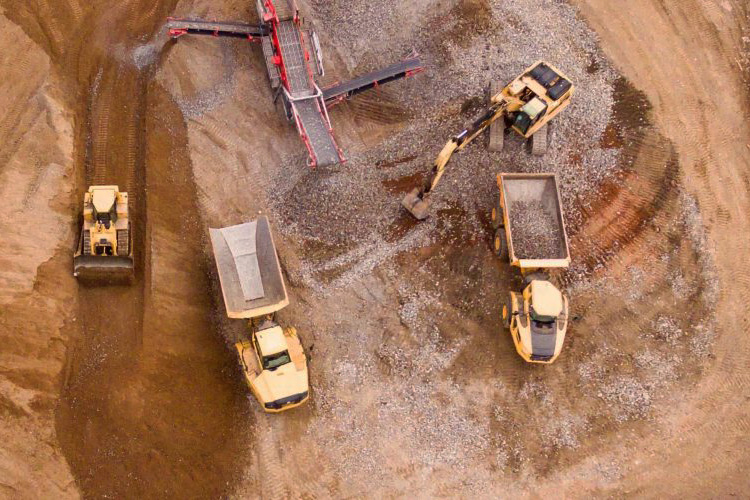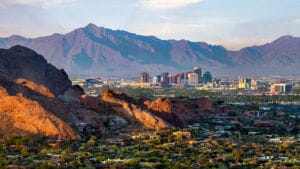The long-treasured love and nostalgia surrounding Legos has always been of the limitless possibilities involved. Despite the instructions included within many modern Lego sets, amazing, unforeseen and unplanned creations often far exceed the intended schematics. Think of the mining industry in a similar light. What mined metals currently offer in tangible goods, sustainability and renewable energy are simply indicative of today’s metal mining needs. Think about the metallurgy practice of 5000 BC. Would early smelters have conceptualized the need for copper in cell phones, electric vehicles and wind turbines? Entire combinations of mined metals and their potential uses have yet to even be conceptualized, but based on metal mining history, we know the future possibilities are limitless.
What we do know now is that there is — and will continue to be — greater demand and dependence upon mined metals for electric vehicles, electric-vehicle charging stations, consumer electronics, military applications and renewable energy technologies.
“Copper will be a key metal in the transition to renewable and sustainable energy,” says Francis McAllister, vice president of land and water at Freeport-McMoRan and chairman of the Arizona Mining Association. “Whether it is electric cars or solar or wind power farms, copper is a key component to environmentally beneficial energy.”
Massive demand for metals and minerals
A recent study — “Metal Demand For Renewable Electricity Generation in the Netherlands” — says this: “The demand for nearly all critical metals is growing, caused by our increasing need for applications which include these metals.”
The study goes on to highlight the demand created by consumer electronics, military operations, and renewable energy as the three applications that will drive the need for coveted metals for the foreseeable future.
“Copper is the best, most economical conductor of electricity,” McAllister says. “As such, wind power, solar power, hydroelectric power, nuclear power and even coal-fired power plants require copper to produce and to distribute electricity. Coal and nuclear power will continue to play a large role in base-load power generation; however, the significant shift to solar and wind power generation as more sustainable power supplies will continue to drive the demand for copper, as these generators are copper intensive. While other metals also will be critical to sustainable electricity supplies, copper is the main component in this transition.”
In addition, electric vehicle charging stations serve as an example of what we do know metal mining — copper in particular — is in great need of now and moving forward.
Within the next decade, by 2030, there will be an estimated 20 million electric vehicle charging stations, creating a demand for 250 percent more copper than what is used today. Yet, if we’re looking at charging stations as metaphorical building blocks of a larger box set, it’s important to examine the other pieces.
“Besides the charging stations, which in and of themselves place a massive demand on copper production, the electric vehicles themselves — not just passenger vehicles, but buses, trains, subway cars — will independently demand an increase in copper,” says David Kimball III, shareholder at Gallagher and Kennedy.
“Some 125 million electric vehicles (EVs) are predicted to be on the road by 2030,” adds Neville Judd, communications director for Hexagon Mining. “This will require roughly 10 million tons of copper — a 50 percent increase over current annual global copper consumption (20 million tons).”
Heavy metal demand
Revisiting our Lego analogy, we need to remember that electric vehicles are just one (albeit hefty) building-block set. If our Lego sets are shelved side-by-side in the copper sustainability aisle of a store, here are some of the other boxes you would see:
• Lighting
• Air conditioners
• Refrigerators
• Motors
• Transformers
• Information technology
“When it comes to solar and wind, both are heavily dependent upon copper,” Kimball says. “This is because on the wind side you need turbines — which are full of copper — that are necessary to efficiently produce power. For the solar arrays, they need copper to operate the electrical system in order to not only convey and create electricity, but they also use copper for electrical storage units.”
According to Judd, the additional wind turbines expected to be built by 2030 will require roughly two million tons of copper — about 10 percent of the world’s current production.
Yet, copper usage and benefits are not limited to sustainability and renewable energy. Going back to military applications, copper is utilized to construct essential aircraft and advanced weaponry, and is considered a “strategic and critical mineral.”
“From planes and submarines to military equipment, the defense department is dependent on copper and the continued production of copper,” Kimball says.
Perhaps less known by the general public is the fact that copper serves as a valuable antimicrobial element. With 99.9 percent bacteria reduction, copper aids in killing bacteria found in hospital bed rails, surgical instruments, and diagnostic imaging systems.
So what does the rising demand of copper mean for Arizona? Considering that Arizona is the nation’s biggest producer of copper, it means incredible economic potential.
“Arizona currently produces 65 to 70 percent of the total U.S. copper,” McAllister says. “The state has great resources and significant opportunity to supply more copper for the growing demand.”
But that’s not all.
Bountiful economy and employment boost
For all the demand for copper, there are additional aspects of non-fuel mineral mining that impact Arizona. These include molybdenum, which can be used for diverse applications, from additives for water treatment and feedstock to lighting and electronics; potash, used primarily as an agricultural fertilizer; silver, found in anything from watches and cars to works of art; zinc, frequently found in batteries, tires, cement, paint and more; uranium, which serves as the largest source of carbon-free energy in the world; and coal, which supplies 30 percent of the nation’s energy.
Together, these minerals and metals are undeniable and invaluable drivers of Arizona’s economy and a tremendous employment generator for the state.
“The average income for someone working in Arizona’s copper industry is nearly double the average state wage,” McAllister says. “The industry maintains and brings high-paying jobs to Arizona, as well as pays significant taxes to state and local governments.”
According to Lee McPheters, research professor of economics in the W. P. Carey School of Business at Arizona State University, who released “Arizona Mining Economy Outlook” in October 2018, the state’s mining industry means $11.4 billion in economic impact, including:
• 38,963 total Arizona jobs supported
• $2.8 billion total income to Arizona workers
• $5 billion purchases from Arizona Business
“It’s important to note that Arizona is second in the nation in non-fuel mineral production,” says Steve Trussell, executive director of both the Arizona Rock Products Association and the Arizona Mining Association. “There are more mining projects attempting to come online in the future to meet the demand for several key and strategic minerals. As a state, we will continue to be a major source for key mined materials.”
“Two-thirds of this country’s copper is produced in Arizona,” Kimball says, “and because the U.S. is the most stable political entity across the globe, you’re seeing more and more copper production come out of the U.S.”
Additionally, as more artificial intelligence, robotics and global positioning systems (GPS) have emerged, they enable more comprehensive mining recovery than historical operations.
“This means that many of the historical, low-grade ores and/or low-grade tailings become new feedstock,” Kimball says, “that can be re-processed to recover the residual copper that the original technology was not capable of extracting.”
Stepping up environmental efficiency
Globally, the mining industry has endured heavy scrutiny for its navigation of environmental impacts. Mining industry leaders don’t shy away from this topic, but at the same time hope to help change the narrative.
“The industry recognizes that by definition, mining will change the landscape in a particular location,” McAllister says. “However, the industry is continually working to minimize impacts and engage with local communities to help them understand the impacts and get their input. Each mine in Arizona is regulated heavily by local, state and federal regulatory agencies that monitor air quality, water quality, habitat impact and safety. The industry must receive permits to operate and work within the parameters of the permits. These regulations protect the communities and environment from undue impact.”
While changing the industry’s narrative, the takeaway is to demonstrate that the mining industry today is not what it once was.
“With most ore grades in long-term decline, mines are compelled to be smarter about doing more with less and doing it sustainably,” adds Judd. “By converging both physical and digital worlds, Hexagon helps smart mines to put their data to work, enabling efficiencies and automating processes on-route to a safer, autonomous future.”
Opposed to the past, the mining industry we know today stands as one of the most heavily regulated industries in the country.
“There are no regulations as comprehensive and as effective as what we have here in the U.S. in ensuring public health and protection of the environment,” Kimball says, “We have federal and state regulatory programs that protect ground and surface water, air quality, concentrations of contaminants in soil and mandates reclamation for post-mining re-uses.”
One example Kimball references is Arizona’s Aquifer Protection Program, adopted to protect Arizona’s groundwater quality. According to the Arizona Department of Environmental Quality, “Arizona’s groundwater protection programs are highly regarded by many states and agencies, including the U.S. Environmental Protection Agency (EPA), as comprising one of the most comprehensive approaches in the nation.”
“The mining industry is dedicated to the people in our industry, the communities in which we live, and the environment that nurtures us all,” Trussel says. “Mine employees have a great affinity for the environment and spend a great deal of time not only working, but recreating outdoors. As such, mine employees work hard to provide much-needed resources while striking that critical balance of being protective of air, water and land resources. Our future depends on that and I am affirmed that no one understands this as well as our industry. Mining will provide the needed resources for a better future.”



